March 2018
By Pierre Goldschmidt
If one had to choose the most exceptional year in the history of the International Atomic Energy Agency (IAEA) safeguards regime, it would be 2003. That year saw four events that, it is clear after 15 years, represented important challenges and in some respects missed opportunities for the governments seeking to prevent the spread of nuclear weapons.
On January 10, 2003, North Korea announced its withdrawal from the nuclear Nonproliferation Treaty (NPT), a unique case so far. On February 21, IAEA inspectors discovered at Natanz in Iran a pilot centrifuge enrichment facility ready to start operation, as well as the existence of undeclared nuclear material. On March 20, U.S. forces invaded Iraq on the pretext that the country still had a weapons of mass destruction program that included nuclear weapons. On December 19, Colonel Moammar Gaddafi announced that Libya was abandoning its 20-year covert nuclear weapons program; and as a result, the IAEA discovered the existence of a vast international network of clandestine nuclear traffic headed by Abdul Qadeer Khan of Pakistan.
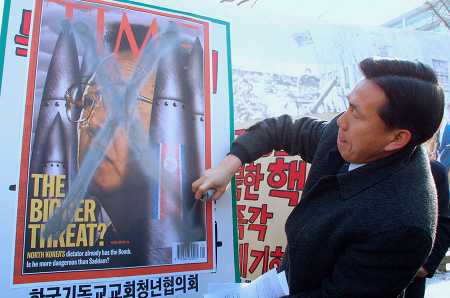 Incidentally, it was also the year during which, after some 15 years of an IAEA budget policy of zero real growth, the agency’s Board of Governors agreed to increase the regular budget of the safeguards department by 22 percent (in real terms) over a period of four years.
Incidentally, it was also the year during which, after some 15 years of an IAEA budget policy of zero real growth, the agency’s Board of Governors agreed to increase the regular budget of the safeguards department by 22 percent (in real terms) over a period of four years.
Still, the international community failed to take bold steps similar to what it had done a dozen years earlier. At that time, following the 1991 Persian Gulf War, the world discovered that Iraq had developed a clandestine nuclear weapons program over an extended period of time in parallel to its declared peaceful nuclear activities. This was despite the fact that Iraq was a party to the NPT and had had a comprehensive safeguards agreement in force with the IAEA since 1972.
Realizing that a comprehensive safeguards agreement1 did not provide the IAEA with the necessary tools to verify the declarations of non-nuclear-weapon states, the IAEA board in 1997 approved the Model Additional Protocol to provide the tools to draw the so-called broader conclusion that there are no undeclared nuclear material and activities in a non-nuclear-weapon state and that its declarations are correct and complete.
It is disturbing that no comparable measures were adopted after the 2003 events. The following analysis will focus on Iran’s noncompliance with its IAEA safeguards agreement, North Korea’s withdrawal from the NPT, and the lessons not yet fully learned.
The Lessons From Iran
Three major lessons from the experience with Iran relate to dealing with a state found in noncompliance with its safeguards agreement.
Lesson 1: In a case of noncompliance, the IAEA must refer it to the UN Security Council without undue delay. In November 2002, IAEA Director-General Mohamed ElBaradei said, “I believe that while differing circumstances may necessitate asymmetric responses, in the case of noncompliance with nonproliferation obligations, for the credibility of the regime, the approach in all cases should be one and the same: zero tolerance.” Yet, by failing to declare Iran in noncompliance in the IAEA director-general’s November 2003 report and in the ensuing Board of Governors resolution, the IAEA created a damaging precedent with far-reaching consequences still felt today.
When noncompliance is detected by the safeguards department, time is of the essence in reporting it. Any noncompliant state should know that it will be referred within a short period of time first to the IAEA board and then to the UN Security Council. If it proactively cooperates to correct the situation, it should be referred to the council for “information purposes only,” as was the case with Libya in March 2004. If the state in noncompliance adopts a “policy of concealment, with cooperation being limited and reactive, and information being slow in coming, changing and contradictory,”2 as was the case in Iran, the issue should be reported without delay to the council for action.
In the case of Iran, the IAEA board adopted on September 12, 2003, a consensus resolution that called on Iran to “suspend all further uranium enrichment-related activities” and to grant “unrestricted access, including environmental sampling, for the [IAEA] to whatever locations the [IAEA] deems necessary for the purposes of verification of the correctness and completeness of Iran’s declarations.”
The problem with such a resolution, which the board might well adopt in a future case of noncompliance, is that it is not legally binding. The only way to make it legally binding is to have it adopted by the Security Council. In the case of Iran, a binding resolution was not adopted by the council until December 2006.3 Three crucial years were lost, making the situation practically irreversible.
Lesson 2: In case of noncompliance, the IAEA should temporarily receive expanded verification authority. Under the governing IAEA statute, safeguards are “designed to ensure that special fissionable and other materials, services, equipment, facilities, and information…under [IAEA] supervision or control are not used in such a way as to further any military purpose.” To reach that objective, the statute provides that the agency will have the right and responsibility “to send into the territory of the recipient State inspectors…who shall have access at all times to all places and data and to any person who by reason of his occupation deals with materials, equipment, or facilities which are required by this Statute to be safeguarded, as necessary…to determine whether there is compliance with the undertaking against use in furtherance of any military purpose.”
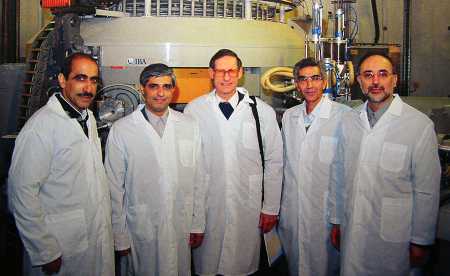 Last year marked the 60th anniversary of this forward-looking mandate coming into force. In practice, unfortunately, the commitments accepted by non-nuclear-weapon states under a comprehensive safeguards agreement and even an additional protocol to their safeguards agreement are much more limited, particularly as relates to access to information, persons, locations, and data and documents.4 Iran is well aware of those limitations.
Last year marked the 60th anniversary of this forward-looking mandate coming into force. In practice, unfortunately, the commitments accepted by non-nuclear-weapon states under a comprehensive safeguards agreement and even an additional protocol to their safeguards agreement are much more limited, particularly as relates to access to information, persons, locations, and data and documents.4 Iran is well aware of those limitations.
The record shows, particularly in the cases of Iran and North Korea, that the agency will temporarily need expanded verification authority when a state is found in noncompliance or in breach of its obligation to comply with its safeguards agreement and does not show full transparency and cooperation in resolving questions with regard to its nuclear program. This expanded authority needs to go beyond that granted under a comprehensive safeguards agreement and an additional protocol as clearly reflected in the September 2005 IAEA report on Iran, which stated,
Given Iran’s past concealment efforts over many years, such transparency measures should extend beyond the formal requirements of the Safeguards Agreement and Additional Protocol and include access to individuals, documentation related to procurement, dual use equipment, certain military owned workshops and research and development locations. Without such transparency measures, the [IAEA] ability…to verify the correctness and completeness of the statements made by Iran will be restricted.5
The problem is that these additional transparency measures have not been defined in any precise way. Also, they were not included in Security Council Resolution 1737, in which the council in 2006 decided “that Iran shall provide such access and cooperation as the IAEA requests to be able…to resolve all outstanding issues, as identified in IAEA reports.”
These broader access rights, conducted under “managed access” conditions, must not exclude military sites because it is likely that the military or related actors would be involved in nuclear activities associated with a weapons program, should one exist.6 Denial of, unwarranted delays in, or limitations to access should be reported by the IAEA director-general to the board and, as appropriate, to the Security Council.
Lesson 3: The UN Security Council should adopt a generic resolution preventively dealing with cases of noncompliance.
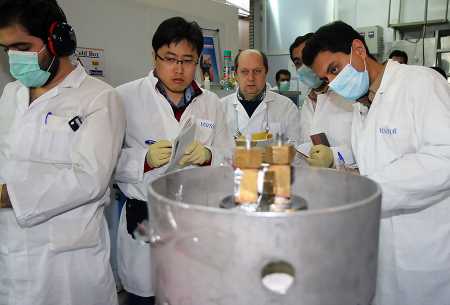 In order to give the IAEA the verification tools it needs in cases of noncompliance, the Security Council should adopt a generic resolution under Article 41 of the UN Charter stating that if the IAEA finds a state to be in noncompliance with its safeguards agreement in accordance with Article XII.C of the IAEA statute, the Security Council upon request by the agency would automatically adopt a state-specific resolution requiring that state to temporarily grant to the agency extended access rights.7 These rights, defined in the Model Temporary Complementary Protocol published in April 2009, would be terminated as soon as the agency’s secretariat and board have drawn the so-called broader conclusion that there are no undeclared nuclear material and activities in the state and that its declarations to the IAEA are correct and complete.8
In order to give the IAEA the verification tools it needs in cases of noncompliance, the Security Council should adopt a generic resolution under Article 41 of the UN Charter stating that if the IAEA finds a state to be in noncompliance with its safeguards agreement in accordance with Article XII.C of the IAEA statute, the Security Council upon request by the agency would automatically adopt a state-specific resolution requiring that state to temporarily grant to the agency extended access rights.7 These rights, defined in the Model Temporary Complementary Protocol published in April 2009, would be terminated as soon as the agency’s secretariat and board have drawn the so-called broader conclusion that there are no undeclared nuclear material and activities in the state and that its declarations to the IAEA are correct and complete.8
This generic resolution should also require the noncompliant state to (1) immediately suspend all nuclear fuel-cycle-related activities as long as the IAEA has not been able to draw the broader conclusion and (2) conclude with the agency, within a limited period of time, a facility-specific safeguards agreement for all its nuclear facilities. The latter requirement is necessary to close the most damaging safeguards agreement loophole detailed below in Lesson 6.
This generic resolution should provide that if the IAEA director-general is unable to report within 60 days of the adoption of the corresponding state-specific resolution that the noncompliant state has concluded the required facility-specific safeguards agreement or that it is fully implementing the other requirement of the resolution, the Security Council would immediately convene to adopt a new Article 41 resolution sanctioning the noncompliant state. The level of sanctions would not be predetermined, and the permanent members of the Security Council would still have a veto right, but it would make the adoption of sanctions at an early stage much more likely and therefore constitute an improved deterrence.
One should bear in mind that, for almost 10 years, the Security Council’s legally binding sanctions against Iran were very limited and essentially targeted designated individuals and entities involved in nuclear or ballistic missile activities. These limited sanctions did not stop Iran from continuing to make progress on its nuclear program in contravention of legally binding Security Council resolutions. At the time of the November 2003 report, Iran had no operating uranium hexafluoride-conversion plant and no operating centrifuge plant at Natanz, and the construction of a heavy-water research reactor at Arak had not yet started.
By early 2006, when the IAEA finally reported Iran’s noncompliance to the Security Council, the situation was very different, and there was no way Iran could be compelled to return to the status of its nuclear program at the time of the November 2003 IAEA report.
This fact is reflected in the Joint Comprehensive Plan of Action concluded in July 2015 between Iran and China, France, Germany, Russia, the United Kingdom, and the United States, which allows Iran to continue enriching uranium under a range of restrictions.
The nuclear agreement’s main objective is to ensure that Iran is constrained and monitored for 15 years so that it cannot break out and manufacture a nuclear weapon in less than one year.9 As long as all parties meet their obligations, this objective will be attained. Some of the constraints accepted by Iran represent a remarkable and largely unexpected achievement. Yet, this is really not a long period for Iran; it will soon be 15 years since the IAEA visited Natanz for the first time.
There is little doubt that around 2030, if not before, Iran will be a nuclear threshold state, that is, a state capable of manufacturing more than one nuclear weapon in a period of a few months and having the necessary delivery means. With that in mind, while the nuclear deal’s negotiations were underway, in March 2014 this author recommended privately to high-ranking officials at the U.S. Department of State the inclusion of two provisions.
The first was a requirement that Iran place each of its nuclear facilities under an IAEA facility-specific safeguards agreement. The second was a requirement for Iran to ratify the Comprehensive Test Ban Treaty (CTBT), as requested in June 2010 under Security Council Resolution 1929. Unfortunately, neither was included in the nuclear deal.
It is difficult to understand on what basis Iran could have objected to these two requirements since Supreme Leader Ayatollah Ali Khamenei had issued a fatwa stating that the production, stockpiling, and use of nuclear weapons is forbidden under Islam, and the agreement’s preamble states that “Iran reaffirms that under no circumstances will Iran ever seek, develop or acquire any nuclear weapons.” France, Germany, Russia, and the UK have ratified the CTBT. So it is most likely that the United States, because it has not yet done so, did not push for inclusion.
The Lessons From North Korea
There are three further lessons to be drawn from the safeguards experience in North Korea.
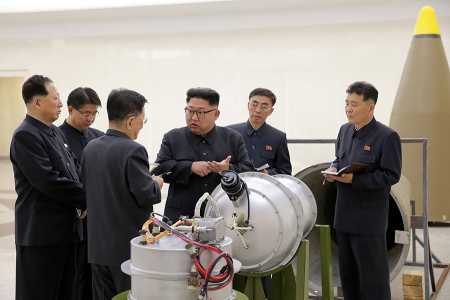 Lesson 4: In case a nation withdraws from the NPT, the UN Security Council must act promptly and decisively to condemn the action and impose sanctions. Shortly after North Korea submitted its initial report to the IAEA in May 1992 under its safeguards agreement, inconsistencies emerged between its initial declaration and agency findings, centering on a mismatch between declared plutonium production and solutions containing nuclear waste. On April 1, 1993, the IAEA board declared that North Korea was in noncompliance with its safeguards agreement and promptly reported the case to the UN Security Council.
Lesson 4: In case a nation withdraws from the NPT, the UN Security Council must act promptly and decisively to condemn the action and impose sanctions. Shortly after North Korea submitted its initial report to the IAEA in May 1992 under its safeguards agreement, inconsistencies emerged between its initial declaration and agency findings, centering on a mismatch between declared plutonium production and solutions containing nuclear waste. On April 1, 1993, the IAEA board declared that North Korea was in noncompliance with its safeguards agreement and promptly reported the case to the UN Security Council.
In the meantime, North Korea had declared on March 12, 1993, its intention to withdraw from the NPT. The Security Council in May 1993 adopted Resolution 825, calling on North Korea to reconsider its withdrawal. Since then, North Korea has repeatedly been declared by the IAEA to be in noncompliance with its safeguards agreement.
The Agreed Framework concluded between the United States and North Korea in October 1994 resulted in the latter suspending its NPT withdrawal and agreeing to freeze the operation of a number of sensitive facilities. Unfortunately, because of the imprecise formulation of the framework, North Korea subsequently did not agree to some IAEA verification measures, such as the taking of samples and nondestructive analysis measurements. The North Koreans also did not submit accounting reports to the agency for the facilities covered by the freeze.
In October 2002, the Bush administration said that a North Korean official, confronted with a U.S. assessment, admitted the existence of a clandestine uranium-enrichment program. That was the starting point of a crisis that led to North Korea’s announcement on January 10, 2003,
of its NPT withdrawal.
For a period of 13 years after North Korea was first reported to the Security Council for noncompliance, the council failed to adopt a single resolution condemning Pyongyang, even during the three and a half years that followed its NPT withdrawal. Only after the North Koreans tested a nuclear weapon on October 9, 2006, did the council five days later take legally binding action for the first time by adopting Resolution 1718, which imposed an embargo on arms and luxury goods, an asset freeze, and a travel ban for persons designated as involved in the nuclear program. Further, it imposed a ban on a range of imports and exports and prohibited Pyongyang from conducting nuclear tests or launching ballistic missiles.
These sanctions were much too mild and came much too late to dissuade North Korea from continuing with its nuclear weapons program. Since then, North Korea accelerated testing of nuclear weapons and launched increasingly more capable ballistic missiles.
The main factor leading to this serious situation is China’s consistent opposition, until 2017, to effective Security Council sanctions against Pyongyang. China’s stated justification was concern that harsh sanctions could precipitate the collapse of the regime, potentially driving hundreds of thousands of North Korean refugees into China and increasing the likelihood of Korean unification under the leadership of the democratic South. China would then have a border with a U.S. ally that is home to more than 25,000 U.S. troops.
Although China’s concerns are legitimate, the consequence of its unconstructive and ineffective attitude until very recently is that North Korea today has an arsenal of nuclear weapons, which it is unlikely to abandon in the foreseeable future. In any case, it is critical for the Security Council to adopt new measures to minimize the risk that other states could one day follow North Korea’s example.
Lesson 5: The Security Council needs to deter withdrawal from the NPT by making the use of the veto right less likely. As exemplified by the cases of Iran and North Korea, one of the greatest difficulties in deterring states from violating their nonproliferation undertakings and from ignoring legally binding Security Council resolutions is the hope that at least one of the five veto-wielding council members will oppose the adoption of effective sanctions.
As a step toward strengthening the nonproliferation regime, the Security Council should adopt a generic and legally binding resolution deciding that if a state notifies its withdrawal from the NPT (an undisputed right under Article X.1), such notification constitutes a threat to international peace and security as defined under Article 39 of the UN Charter.10 This generic resolution should make sure that the Security Council would meet immediately with a view to decide, under Article 41 of the UN Charter, which measures would apply as soon as the withdrawal becomes effective.
This generic resolution should include a statement by the council’s five permanent members that they consider the withdrawal to be such a major threat to international peace and security that, in such a case, they do not intend to exercise their veto right against any state-specific sanctions resolution if they are the only permanent member to do so.
Because this declaration of intention is not legally binding, that generic resolution would not deprive those members of their veto right on any state-specific resolution. It would ensure that the council consider the matter without delay and increase the risk of immediate sanctions for the withdrawing state.
Lesson 6: All nuclear fuel-cycle facilities should be subject to irreversible IAEA safeguards. One of the main outstanding safeguards loopholes that deserves prompt attention is the absence of a requirement for IAEA safeguards to irreversibly remain in force should a state leave the NPT. If one day Iran or any other NPT non-nuclear-weapon state decides to withdraw, its safeguards agreement with the IAEA would automatically lapse under the terms of that agreement. As a result, a state may withdraw from the NPT and use previously safeguarded nuclear materials and facilities to produce nuclear weapons without violating any international treaty. NPT members therefore should strengthen safeguards rules and practices by creating a legal requirement to maintain safeguards even if a state exercises its right to withdraw from the NPT.
Over the past 15 years, states and organizations have submitted proposals designed to close this significant loophole. For example, Luxembourg submitted a working paper on behalf of the European Union to the 2005 NPT Review Conference recommending that states “[a]ffirm as a matter of principle that all nuclear materials, equipment, technologies and facilities, developed for peaceful purposes, of a State Party to the Treaty on the Non-Proliferation of Nuclear Weapons remain, in case of a withdrawal from the Treaty, restricted to peaceful uses only and as a consequence have to remain subject to safeguards.”11 Germany and France made similar proposals in 2004.
The UN Security Council attempted to address this issue in 2009, passing Resolution 1887, which urges states to “[r]equire as a condition of nuclear exports that the recipient State agree that, in the event that it should terminate its IAEA safeguards agreement, safeguards shall continue with respect to any nuclear material and equipment provided prior to such termination, as well as any special nuclear material produced through the use of such material or equipment.” However, this resolution does not extend to domestically produced nuclear material, equipment, and facilities. Moreover, because it was not adopted under Chapter VII of the UN Charter, it is not legally binding.
None of these proposals have created an effective legal barrier to a state’s utilization of previously safeguarded facilities and materials for military purposes after its withdrawal from the NPT. It seems unrealistic to expect, as the Nuclear Suppliers Group (NSG) does, that a country deciding to leave the NPT and expel IAEA inspectors would agree thereafter to enter into a facility-specific safeguards agreement with the IAEA, return previously delivered material and equipment to the supplier state, or accept inspectors from the exporting state to conduct verification work that IAEA inspectors are no longer allowed to do.
As this author recommended in March 2015,12 it would be much more effective to require states to conclude a facility-specific safeguards agreement with the IAEA before any materials or technology are transferred, rather than as a bilateral and limited fallback obligation after a state has withdrawn from the NPT, as foreseen by the NSG. Indeed, in contrast to comprehensive safeguards agreements, facility-specific safeguards agreements, known as INFCIRC/66-type agreements, do not lapse if the state withdraws from the NPT.
NSG members should formally agree to interpret their “effective safeguards in perpetuity” export criterion13 as requiring the recipient state to have an INFCIRC/66-type safeguards agreement in force with the IAEA before enrichment- or reprocessing-related equipment, technology, or expertise is transferred. NSG non-nuclear-weapon states should lead by example and place all their enrichment and reprocessing facilities under facility-specific safeguards agreements with the IAEA.
For non-nuclear-weapon states, INFCIRC/66-type safeguards agreements concluded with the IAEA are and would continue to be subsumed under existing comprehensive safeguards agreements. They would become operational only if the latter were terminated.
This approach does not create a new safeguards standard, as the Model Additional Protocol did in 1997. Instead, it involves the simple adoption of an older type of safeguards. Therefore, it should face fewer political obstacles, would impose no operational financial burden on the state or the IAEA, and would require only a little extra paperwork at the outset.
By virtue of the current roster of NSG members, if this approach could be achieved, nearly all non-nuclear-weapon states that are parties to the NPT and currently operate enrichment and reprocessing facilities would have endorsed this new mechanism. The only exception would be Iran.
Nuclear-weapon states should also lead by example when it comes to their own facilities. Currently, nuclear-weapon states have a voluntary offer agreement with the IAEA, under which they determine which facilities they will make available for safeguards. The nuclear-weapon states provide the IAEA with a list of these “eligible” facilities. In order to demonstrate commitment to the principle of irreversible safeguards, each nuclear-weapon state should agree to place any enrichment or reprocessing facility on its list under INFCIRC/66-type safeguards agreements.
In such a case, enrichment facilities in China, France, the UK, and the United States, as well as French and UK reprocessing plants, would be subject to irreversible IAEA safeguards. With negotiations on a fissile material cutoff treaty stalled, this would provide an alternative means of achieving a first step toward a similar goal and may enable the nuclear-weapon states to demonstrate some concrete progress in this area.
What Now?
It is likely that an increasing number of non-nuclear-weapon states will acquire the necessary scientific, technical, and industrial capability to manufacture nuclear weapons and their means of delivery, thereby becoming nuclear threshold states. Indeed, a September 2008 IAEA report on Libya stated that even nuclear weapons designs existed in electronic form.14
It is therefore crucial to adopt without delay measures to deter nuclear threshold states from manufacturing nuclear weapons and then withdrawing from the NPT. As well summarized by Nicholas Miller and Vipin Narang in August 2017,
Nonproliferation efforts relying primarily on export controls and efforts to limit technology may buy time but are clearly insufficient against a motivated proliferator…. To be successful against isolated countries like North Korea, nonproliferation policies must either address the proliferator’s underlying motives—in other words, their sense of insecurity—or they must enlist a strong multilateral coalition that enforces sanctions vigorously, with few exploitable cracks. This is a tall order, but North Korea shows that the stakes are rarely higher.15
To this end, members of the Security Council should discuss and agree on legally binding generic procedures for responding to noncompliance and NPT withdrawal. Because council members would not know which states might be involved in the future, such discussions should be easier and less acrimonious than they would be during the heat of a crisis. An agreement on a set of standard responses to be applied evenhandedly, regardless of the noncompliant state’s allies, would significantly enhance the credibility of the nonproliferation regime.
If adopted, the measures recommended in this paper would make a real difference in protecting against nuclear proliferation. Yet, all countries, most of all the five permanent members of the Security Council, will need to acknowledge that these measures should be adopted now in order to mitigate the consequences of the next proliferation crisis.
ENDNOTES
1 Under a comprehensive safeguards agreement, the IAEA has the right and obligation to ensure that safeguards are applied on all nuclear material in the territory, jurisdiction or control of the State for the exclusive purpose of verifying that such material is not diverted to nuclear weapons or other nuclear explosive devices.
2 International Atomic Energy Agency (IAEA) Board of Governors, “Implementation of the NPT Safeguards Agreement in the Islamic Republic of Iran,” GOV/2003/75, November 10, 2003, para. 50.
3 UN Security Council, S/RES/1737, December 27, 2006. It was only after finding Iran in possession of a document on the production of uranium metal hemispheres, a process related to the fabrication of nuclear weapons components, and after Iran resumed enrichment activities in January 2006 that the IAEA Board of Governors adopted a resolution on February 4, 2006, deciding to report the Iranian file to the UN Security Council. IAEA Board of Governors, “Implementation of the NPT Safeguards Agreement in the Islamic Republic of Iran,” GOV/2006/14, February 4, 2006.
4 For a detailed analysis of these additional protocol limitations and the way they should be temporarily corrected when a state found to be in noncompliance is not fully and proactively cooperating with the IAEA, see Pierre Goldschmidt, “IAEA Safeguards: Dealing Preventively With Non-Compliance,” Carnegie Endowment for International Peace, July 12, 2008, http://carnegieendowment.org/files/Goldschmidt_Dealing_Preventively_7-12-08.pdf.
5 IAEA Board of Governors, “Implementation of the NPT Safeguards Agreement in the Islamic Republic of Iran: Report by the Director-General,” GOV/2005/67, September 2, 2005, para. 50.
6 “The IAEA’s existing authorities should be interpreted to give the Agency the responsibility to inspect for indicators of nuclear weaponization activities.” IAEA Board of Governors and IAEA General Conference, “Report of the Commission of Eminent Persons on the Future of the Agency: Note by the Director General,” GOV/2008/22-GC(52)/INF/4, May 23, 2008 (containing an annex titled “Reinforcing the Global Nuclear Order for Peace and Prosperity: The Role of the IAEA to 2020 and Beyond,” p. 19).
7 Other generic resolutions are UN Security Council Resolution 1373 concerning acts of international terrorism and Resolution 1540 concerning the acquisition of nuclear, chemical, or biological weapons and their means of delivery by nonstate actors.
8 Pierre Goldschmidt, “Concrete Steps to Improve the Nonproliferation Regime,” Carnegie Papers, No. 100 (April 2009), pp. 29-41.
9 The nuclear agreement with Iran includes transparency measures extending beyond 15 years, such as a long-term IAEA presence in Iran, IAEA monitoring of uranium ore concentrate produced by Iran from all uranium ore concentrate plants for 25 years, and containment and surveillance of centrifuge rotors and bellows for 20 years.
10 In Resolution 1540 (2004), the Security Council is “[a]ffirming that proliferation of nuclear, chemical and biological weapons, as well as their means of delivery, constitutes a threat to international peace and security.” It has reaffirmed that statement many times thereafter, but has never “decided” that this is the case under an operative paragraph of a legally binding Chapter VII resolution.
11 "Withdrawal from the Treaty on the Non-Proliferation of Nuclear Weapons," Working paper submitted by Luxembourg on behalf of the European Union, May 10, 2005, https://documents-dds-ny.un.org/doc/UNDOC/GEN/N05/339/76/PDF/N0533976.pdf?OpenElement
12 Pierre Goldschmidt, “Securing Irreversible IAEA Safeguards to Close the Next NPT Loophole,” Arms Control Today, March 2015.
13 Nuclear Suppliers Group, “Guidelines for Nuclear Transfers,” NSG Part 1, June 2013, para. 6(a)(iv).
14 “Much of the sensitive information coming from the [Abdul Qadeer Khan] network existed in electronic form, enabling easier use and dissemination. This includes information that relates to uranium centrifuge enrichment and, more disturbing, information that relates to nuclear weapon design.” IAEA Board of Governors, “Implementation of the NPT Safeguards Agreement in the Socialist People’s Libyan Arab Jamahiriya,” GOV/2008/39, September 12, 2008, para. 38.
15 Nicholas Miller and Vipin Narang, “How North Korea Shocked the Nuclear Experts,” Politico, August 26, 2017, https://www.politico.com/magazine/story/2017/08/26/north-korea-nuclear-tests-shock-experts-215533.
Pierre Goldschmidt is a former nonresident senior associate at the Carnegie Endowment for International Peace. He was deputy director-general and head of the Department of Safeguards at the International Atomic Energy Agency from May 1999 to June 2005. This paper is based on the author's presentation at a November 2017 conference held by the Wilson Center and the Los Alamos National Laboratory.
 Ronald Reagan, under strong public pressure to freeze the arms race, negotiated agreements with the Soviets to ban intermediate-range missiles and verifiably reduce strategic nuclear arsenals. George H.W. Bush took bold steps to withdraw tactical nuclear weapons during the tumultuous final days of the Soviet Union.
Ronald Reagan, under strong public pressure to freeze the arms race, negotiated agreements with the Soviets to ban intermediate-range missiles and verifiably reduce strategic nuclear arsenals. George H.W. Bush took bold steps to withdraw tactical nuclear weapons during the tumultuous final days of the Soviet Union.





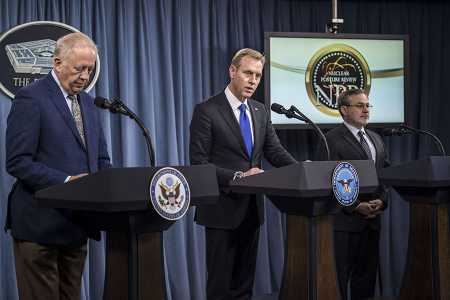 Expanding the role of nuclear weapons. Like the 2010 Obama administration NPR report
Expanding the role of nuclear weapons. Like the 2010 Obama administration NPR report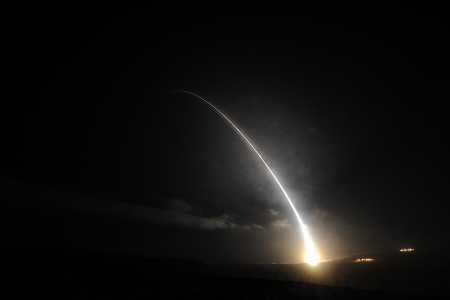 Citing a “dramatic deterioration of the strategic environment,” the NPR asserts the need for these new weapons in order to enhance the flexibility and responsiveness of U.S. nuclear forces. The report posits that these new capabilities will make deterrence more credible against regional aggression and the threat of limited first use, for instance from Russia, by giving the president an expanding range of limited and graduated options to credibly deter Russian nuclear or non-nuclear strategic attacks. It claims these capabilities will “raise not lower” the threshold for nuclear use and are not intended to enable nuclear war-fighting.
Citing a “dramatic deterioration of the strategic environment,” the NPR asserts the need for these new weapons in order to enhance the flexibility and responsiveness of U.S. nuclear forces. The report posits that these new capabilities will make deterrence more credible against regional aggression and the threat of limited first use, for instance from Russia, by giving the president an expanding range of limited and graduated options to credibly deter Russian nuclear or non-nuclear strategic attacks. It claims these capabilities will “raise not lower” the threshold for nuclear use and are not intended to enable nuclear war-fighting. The new NPR report fails to make a convincing case that the United States is slipping from a position of nuclear parity with Russia and facing a regional deterrence gap necessitating new nuclear capabilities, or that the United States is newly threatened by China’s still significantly smaller nuclear arsenal. It fails to explain why all other nuclear-armed countries except Russia will not be deterred by a nuclear force that is primarily sized and postured to deter Russia, whose arsenal is orders of magnitude larger than any other potential adversary, including China. It undersells what the 2010 NPR report termed the “unrivaled conventional capabilities” of the United States—capabilities that are still unrivaled and contribute immensely to deterrence and the defense of our nation, allies, and partners.
The new NPR report fails to make a convincing case that the United States is slipping from a position of nuclear parity with Russia and facing a regional deterrence gap necessitating new nuclear capabilities, or that the United States is newly threatened by China’s still significantly smaller nuclear arsenal. It fails to explain why all other nuclear-armed countries except Russia will not be deterred by a nuclear force that is primarily sized and postured to deter Russia, whose arsenal is orders of magnitude larger than any other potential adversary, including China. It undersells what the 2010 NPR report termed the “unrivaled conventional capabilities” of the United States—capabilities that are still unrivaled and contribute immensely to deterrence and the defense of our nation, allies, and partners.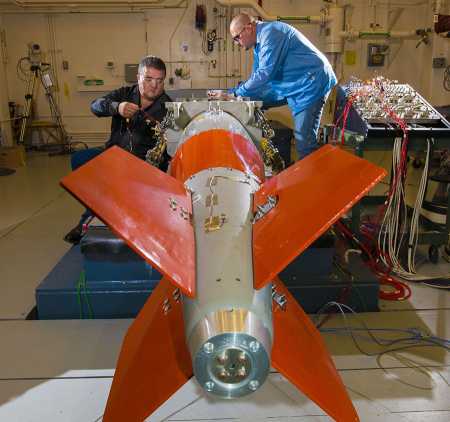 The choices that are troubling include the intention to seek a new low-yield nuclear capability, the rejection of future arms control agreements, and the plan to increase U.S. nuclear weapons production capability. These matters, in particular, deserve close scrutiny by Congress and public debate.
The choices that are troubling include the intention to seek a new low-yield nuclear capability, the rejection of future arms control agreements, and the plan to increase U.S. nuclear weapons production capability. These matters, in particular, deserve close scrutiny by Congress and public debate. In a bold step, the 2010 NPR report tried to identify and set the conditions for meaningful compliance with the disarmament provision in NPT Article VI, while clearly recognizing that the conditions were not currently suited to achieve those goals and might not be for many years. Since 2010, unfortunately, the global security conditions have become even less conducive to achieving a world without nuclear weapons. The 2010 report, while aspiring to these goals, reflected a growing concern that the world was approaching a nuclear tipping point where more states and more weapons would be the norm.
In a bold step, the 2010 NPR report tried to identify and set the conditions for meaningful compliance with the disarmament provision in NPT Article VI, while clearly recognizing that the conditions were not currently suited to achieve those goals and might not be for many years. Since 2010, unfortunately, the global security conditions have become even less conducive to achieving a world without nuclear weapons. The 2010 report, while aspiring to these goals, reflected a growing concern that the world was approaching a nuclear tipping point where more states and more weapons would be the norm.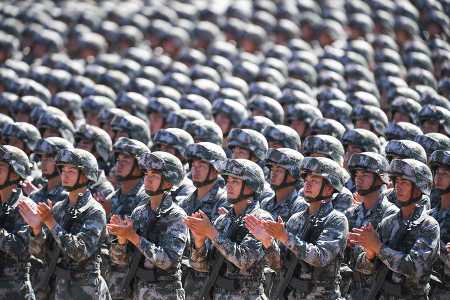 Although focused and driven primarily by Russian behavior, China’s growing conventional capabilities, including space and cyber capabilities, also shape the decisions in the 2018 report. In addition to the near-term decision to “supplement” the nuclear forces with a low-yield variant of the W76-1 warhead for ballistic missile submarines, the new report lays out a long-term plan to prepare the United States to develop, test, and deploy new nuclear weapons and to increase the size of the nuclear stockpile. In short, prepare for a new arms race.
Although focused and driven primarily by Russian behavior, China’s growing conventional capabilities, including space and cyber capabilities, also shape the decisions in the 2018 report. In addition to the near-term decision to “supplement” the nuclear forces with a low-yield variant of the W76-1 warhead for ballistic missile submarines, the new report lays out a long-term plan to prepare the United States to develop, test, and deploy new nuclear weapons and to increase the size of the nuclear stockpile. In short, prepare for a new arms race.![Air Force General John Hyten, U.S. Strategic Command commander, addresses the 5th Bomb Wing airmen at Minot Air Force Base, N.D., June 6, 2017. "The ICBMs that we have here are the most ready element [of the nuclear triad], the bombers that we have here are the most flexible, the submarine element is the most survivable, and when you put those three together, you come up with a deterrent capability that our adversaries fear and they need to fear those capabilities,” he told the Bismarck Tribune during the visit. “I hope to never have to employ them but they have to be ready all the time.” (Photo: J.T. Armstrong/U.S. Air Force) Air Force General John Hyten, U.S. Strategic Command commander, addresses the 5th Bomb Wing airmen at Minot Air Force Base, N.D., June 6, 2017. "The ICBMs that we have here are the most ready element [of the nuclear triad], the bombers that we have here are the most flexible, the submarine element is the most survivable, and when you put those three together, you come up with a deterrent capability that our adversaries fear and they need to fear those capabilities,” he told the Bismarck Tribune during the visit. “I hope to never have to employ them but they have to be ready all the time.” (Photo: J.T. Armstrong/U.S. Air Force)](/sites/default/files/images/ACT_Photos/2018_03/022318_08_Creedon_0.jpg) The NNSA does not have out-year funding to implement the next generation of stockpile stewardship, build new experimental facilities, conduct and diagnose more subcritical experiments at the Nevada National Security Site, expand computational capabilities necessary to maintain the current stockpile, identify and resolve future problems, conduct life extension programs, and support the fight against nuclear terrorism and proliferation.
The NNSA does not have out-year funding to implement the next generation of stockpile stewardship, build new experimental facilities, conduct and diagnose more subcritical experiments at the Nevada National Security Site, expand computational capabilities necessary to maintain the current stockpile, identify and resolve future problems, conduct life extension programs, and support the fight against nuclear terrorism and proliferation. Incidentally, it was also the year during which, after some 15 years of an IAEA budget policy of zero real growth, the agency’s Board of Governors agreed to increase the regular budget of the safeguards department by 22 percent (in real terms) over a period of four years.
Incidentally, it was also the year during which, after some 15 years of an IAEA budget policy of zero real growth, the agency’s Board of Governors agreed to increase the regular budget of the safeguards department by 22 percent (in real terms) over a period of four years. Last year marked the 60th anniversary of this forward-looking mandate coming into force. In practice, unfortunately, the commitments accepted by non-nuclear-weapon states under a comprehensive safeguards agreement and even an additional protocol to their safeguards agreement are much more limited, particularly as relates to access to information, persons, locations, and data and documents.
Last year marked the 60th anniversary of this forward-looking mandate coming into force. In practice, unfortunately, the commitments accepted by non-nuclear-weapon states under a comprehensive safeguards agreement and even an additional protocol to their safeguards agreement are much more limited, particularly as relates to access to information, persons, locations, and data and documents. In order to give the IAEA the verification tools it needs in cases of noncompliance, the Security Council should adopt a generic resolution under Article 41 of the UN Charter stating that if the IAEA finds a state to be in noncompliance with its safeguards agreement in accordance with Article XII.C of the IAEA statute, the Security Council upon request by the agency would automatically adopt a state-specific resolution requiring that state to temporarily grant to the agency extended access rights.
In order to give the IAEA the verification tools it needs in cases of noncompliance, the Security Council should adopt a generic resolution under Article 41 of the UN Charter stating that if the IAEA finds a state to be in noncompliance with its safeguards agreement in accordance with Article XII.C of the IAEA statute, the Security Council upon request by the agency would automatically adopt a state-specific resolution requiring that state to temporarily grant to the agency extended access rights. Lesson 4: In case a nation withdraws from the NPT, the UN Security Council must act promptly and decisively to condemn the action and impose sanctions. Shortly after North Korea submitted its initial report to the IAEA in May 1992 under its safeguards agreement, inconsistencies emerged between its initial declaration and agency findings, centering on a mismatch between declared plutonium production and solutions containing nuclear waste. On April 1, 1993, the IAEA board declared that North Korea was in noncompliance with its safeguards agreement and promptly reported the case to the UN Security Council.
Lesson 4: In case a nation withdraws from the NPT, the UN Security Council must act promptly and decisively to condemn the action and impose sanctions. Shortly after North Korea submitted its initial report to the IAEA in May 1992 under its safeguards agreement, inconsistencies emerged between its initial declaration and agency findings, centering on a mismatch between declared plutonium production and solutions containing nuclear waste. On April 1, 1993, the IAEA board declared that North Korea was in noncompliance with its safeguards agreement and promptly reported the case to the UN Security Council.
 ic declarations to the contrary, there has to be delegation of authority and capability to launch retaliatory strikes, not only to officials outside the Oval Office but outside Washington too, or there would be no real basis for nuclear deterrence,” he writes.
ic declarations to the contrary, there has to be delegation of authority and capability to launch retaliatory strikes, not only to officials outside the Oval Office but outside Washington too, or there would be no real basis for nuclear deterrence,” he writes.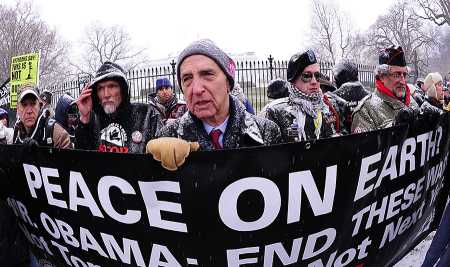 Ellsberg was an observer or a participant in many key milestones of the Cold War. From Rand, he joined the Department of Defense and was instrumental in helping to draft and implement the first nuclear war plan, known as the Single Integrated Operational Plan.
Ellsberg was an observer or a participant in many key milestones of the Cold War. From Rand, he joined the Department of Defense and was instrumental in helping to draft and implement the first nuclear war plan, known as the Single Integrated Operational Plan. Sleepwalking to Armageddon: The Threat of Nuclear Annihilation
Sleepwalking to Armageddon: The Threat of Nuclear Annihilation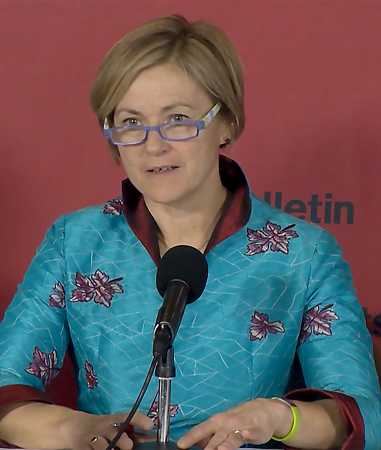 Russian officials consistently have asked to extend the New Strategic Arms Reduction Treaty (New START) for another five years, to 2026, including an early call from President Vladimir Putin to President Donald Trump. Extending that treaty is an easy, positive step to take, but it hasn't been done. The landmark Intermediate-Range Nuclear Forces (INF) Treaty is on the rocks. For four years, both sides have alleged violations, but Russia last year actually fielded a ground-launched cruise missile that violates the treaty. The United States has stated it will remain in compliance, but the NPR puts Russia on notice that the status quo is untenable.
Russian officials consistently have asked to extend the New Strategic Arms Reduction Treaty (New START) for another five years, to 2026, including an early call from President Vladimir Putin to President Donald Trump. Extending that treaty is an easy, positive step to take, but it hasn't been done. The landmark Intermediate-Range Nuclear Forces (INF) Treaty is on the rocks. For four years, both sides have alleged violations, but Russia last year actually fielded a ground-launched cruise missile that violates the treaty. The United States has stated it will remain in compliance, but the NPR puts Russia on notice that the status quo is untenable.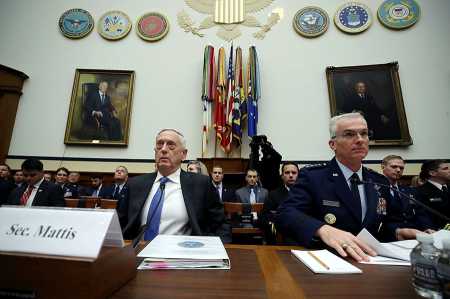 The review, the fourth since the end of the Cold War, makes a case for what it presents as a more flexible, resilient, and adaptable U.S. nuclear posture to meet current and future challenges. But critics warn that the Trump administration is moving in ways that will be costly and potentially destabilizing.
The review, the fourth since the end of the Cold War, makes a case for what it presents as a more flexible, resilient, and adaptable U.S. nuclear posture to meet current and future challenges. But critics warn that the Trump administration is moving in ways that will be costly and potentially destabilizing.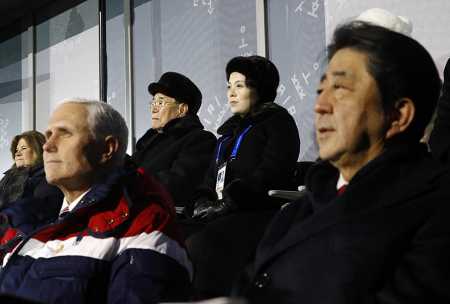 Moon has sought to build on the fledgling North-South dialogue to bring about U.S.-North Korean talks to reduce the risk of war over Pyongyang’s advancing nuclear weapons program. His efforts, however, may not be fully supported by the Trump administration. “We want to talk only under the right conditions,” President Donald Trump said Feb. 26.
Moon has sought to build on the fledgling North-South dialogue to bring about U.S.-North Korean talks to reduce the risk of war over Pyongyang’s advancing nuclear weapons program. His efforts, however, may not be fully supported by the Trump administration. “We want to talk only under the right conditions,” President Donald Trump said Feb. 26.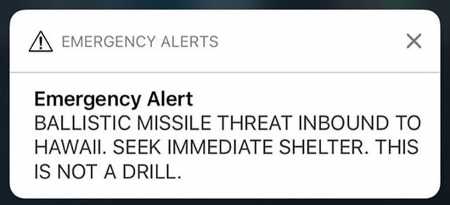 Gov. David Y. Ige (D) called the mistake “totally unacceptable” and apologized for the “pain and confusion” caused by the false alert. The unidentified employee reportedly was fired.
Gov. David Y. Ige (D) called the mistake “totally unacceptable” and apologized for the “pain and confusion” caused by the false alert. The unidentified employee reportedly was fired.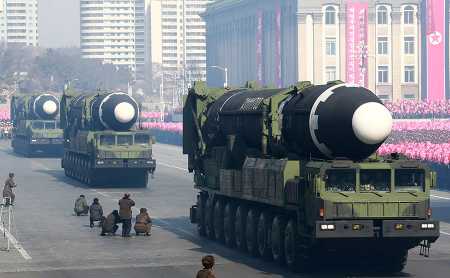 Earlier in the month, U.S. Secretary of State Rex Tillerson called on all states to improve sanctions implementation during a meeting of 20 countries in Vancouver. The countries represented were the 18 that supported South Korea during the Korean War by sending troops under UN command, plus South Korea and Japan.
Earlier in the month, U.S. Secretary of State Rex Tillerson called on all states to improve sanctions implementation during a meeting of 20 countries in Vancouver. The countries represented were the 18 that supported South Korea during the Korean War by sending troops under UN command, plus South Korea and Japan.